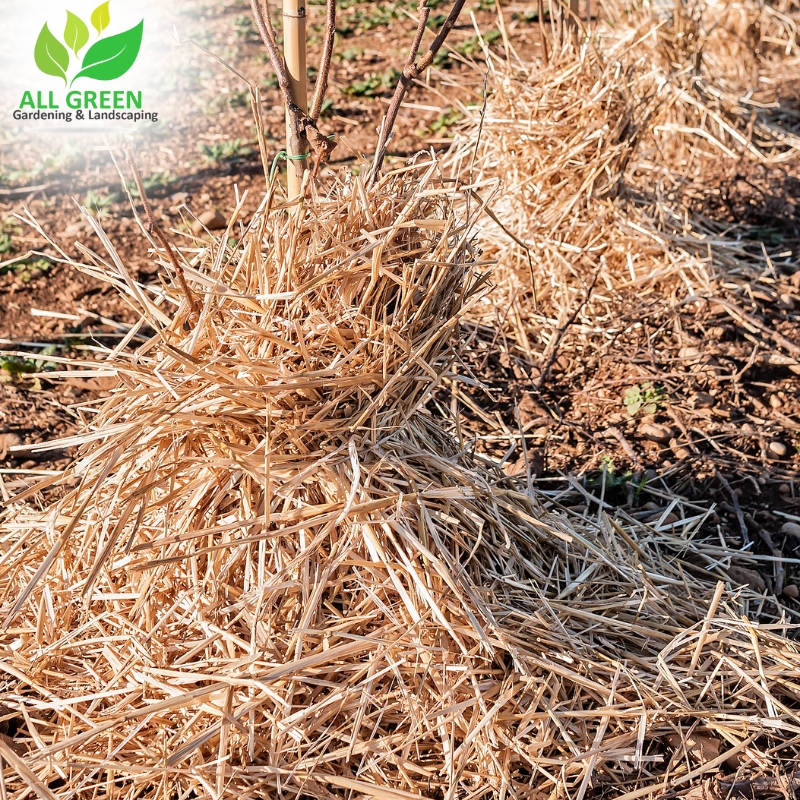Straw mulching can transform your garden into a thriving, low‑maintenance oasis. When you spread straw over soil, it locks in moisture, suppresses weeds and moderates temperature, rather than letting your soil bake under the Aussie sun. Straw mulching also builds organic matter as it breaks down, nourishing plants and promoting strong root systems. In this post, you’ll explore exactly how straw mulching tackles common garden woes and learn clear, practical steps to get it working for you. Expect insights into straw moisture management, pest prevention and smart application so you can feel confident boosting garden health with straw coverage.
What problems does straw mulching solve in gardens?
Straw mulch helps tackle multiple garden pains:
- It prevents rapid soil drying, keeping root zones moist longer
- It curbs weed growth, reducing time spent on hand‑weeding
- It buffers temperature swings, protecting plants from heat stress
- It gradually improves soil structure, feeding earthworms and microbes
Problem: soil bakes dry under midday sun
Agitate: dry soil can stress plants, especially seedlings, and stall growth
Solution: applying a layer of straw cuts evaporation and locks in moisture
When you use the advantages of using straw for mulch, you enjoy low‑cost, natural protection that builds soil as it decomposes, unlike plastic sheets that trap heat and cost more over time. It’s a smart fix for thirsty gardens.
Why does your soil lose moisture so quickly without mulching?
Bare soil is prone to losing water by evaporation:
- Hot sunshine heats the soil directly
- Wind whisks away surface moisture
- Rain can’t stay near roots—it flows off
Without mulch, watering feels like pouring money down the drain. Using straw for mulching layers helps by:
- Trapping moisture in soil pores
- Lowering soil temperature by a few degrees
- Redirecting rainwater to seep in slowly
If water retention is a concern, how garden mulch affects soil moisture is worth exploring. Soil under straw stays damp for longer than topsoil exposed to direct sun, cutting your watering needs significantly.
Can poor mulching choices attract garden pests?
While mulch is helpful, some can backfire:
- Rotten bark may hide slugs and snails
- Grass clippings can mat down and breed disease
- Improper straw can bring weed seeds into your beds
Problem: unwanted critters and weeds
Agitate: critters eat seedlings and disease spikes when conditions are dank
Solution: Using the mulching techniques with straw, such as seedless straw, avoids bringing in unwanted extras
Pea straw, for instance, resists growing weeds while it rots, compared with other grasses. That’s why understanding the use of seedless straw for mulch safety is useful—agricultural advice supports using clean, seed‑free straw to avoid weed problems.
How does straw mulching improve plant health and soil quality?
Healthy plants rely on healthy soil. Straw mulch does that by:
- Feeding microbes as it decomposes
- Attracting earthworms that loosen the soil
- Blocking weeds and giving roots uninterrupted space to grow
Here’s what happens under the hood:
| Benefit | Impact |
| Organic matter addition | Builds soil fertility and structure over time |
| Temperature buffering | Protects roots in both heat and mild frost |
| Weed suppression | Reduces competition, so plants can thrive |
| Microbial activity | Encourages nutrient cycling for stronger, healthier plants |
Straw also encourages deeper rooting by keeping roots cool and consistently moist. That’s why understanding how straw mulch helps gardens thrive is vital for gardeners aiming for strong, resilient crops.
[IMAGE PLACEHOLDER]
What are the best ways to apply straw mulching effectively?
Applying straw isn’t just dumping a bale—doing it right makes all the difference:
- Clear weeds first
- Lay a 5–10cm thick blanket of clean, seed‑free straw
- Avoid smothering small plants—leave a small gap around stems
- Water the soil before and after laying to settle it in
- Top up as straw decomposes, usually every 6–12 months
Use layering of straw mulch in gardens to supplement the soil over time. Well‑applied mulch helps insulate through summer and winter. Plus, straw mulch garden care tips include refreshing faded mulch and avoiding wet mats.
Is straw the right mulch option for every garden type?
Straw mulch excels in many settings, but it’s not always the top pick:
- Ideal for veggie beds, flower borders, and new plantings
- Less suited to high‑foot‑traffic paths, where wood chips wear better
- Not a good match for waterlogged soils—it can go mouldy and smell
Consider comparing straw to bark mulch if you want a long‑lasting, decorative alternative for paths or ornamentals. Straw is best where moisture and soil health matter most.
[IMAGE PLACEHOLDER]
Final thoughts on making straw mulching work for you
Problem: choosing mulch that’s cheap but causes issues
Agitate: plain straw might bring weeds, or not last long
Solution: choosing quality, seed‑free straw and refreshing it helps your garden flourish
When you tackle these issues with:
- Clean straw and correct thickness
- Careful application around stems
- Regular maintenance and renewals
You’ll see real gains in moisture retention, soil health and plant resilience. If you’re wondering why choose straw as mulch material over other types, just check how your garden responds—it’s often the cheapest, most effective organic mulch for Aussie soil.
Still want backup? Explore garden health with straw coverage from real‑world case studies or using straw for mulching layers that show how roots benefit deeply over time.
For expert help, don’t hesitate to speak to All Green Gardening & Landscaping about straw mulch solutions and how to tailor it for your garden type.

